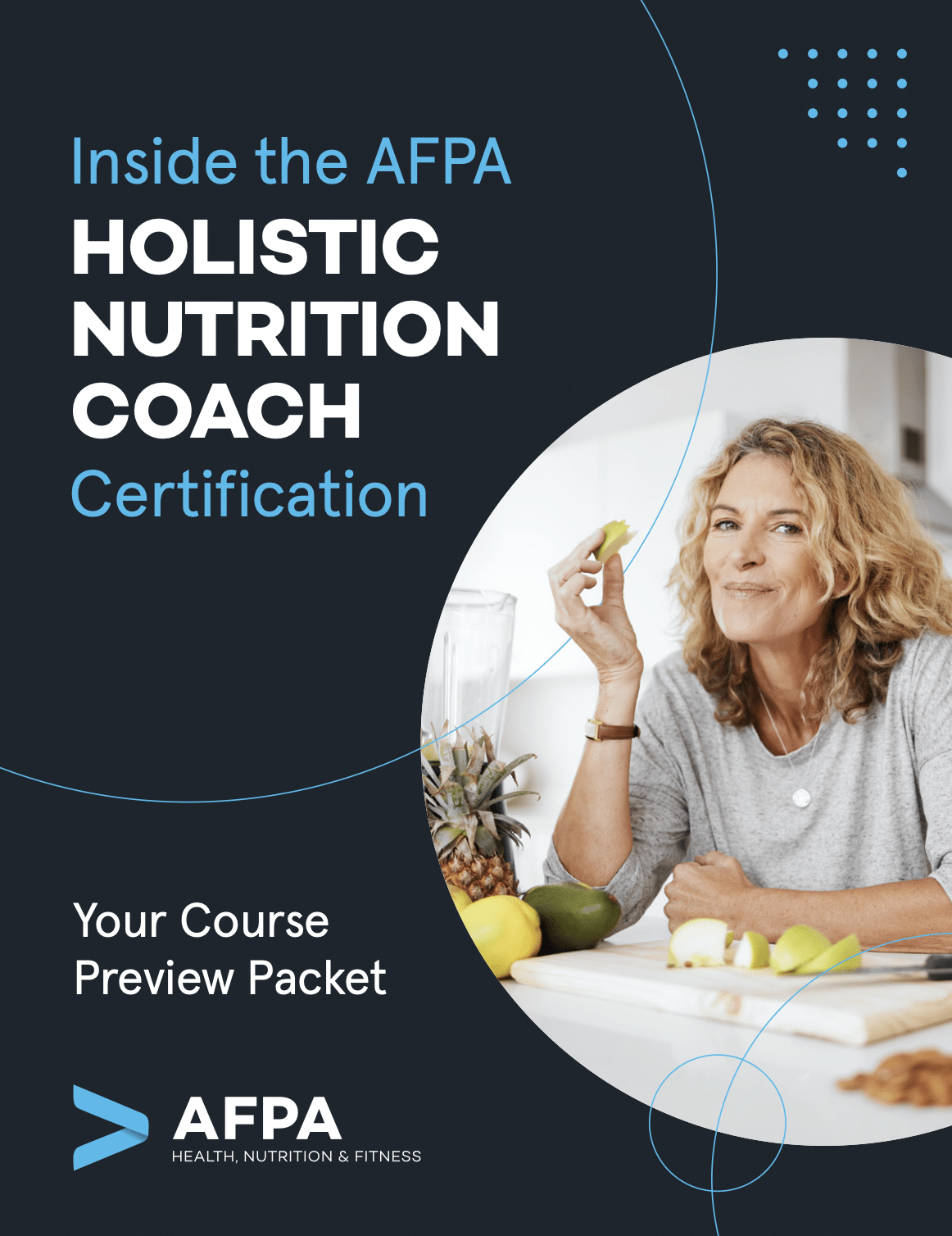Having a digital presence and providing valuable content isn’t enough anymore when it comes to reaching audiences as a nutrition coach. Word-of-mouth marketing works, but might plateau or roller-coaster. The best way to keep a steady lead generation and more regular business is set a marketing plan in place. Follow these steps to build your nutrition coaching content strategy:
Know Your Business
Who are you, what do you do, and who do you do it for? Whether starting out and naming your business, gaining momentum on social media, or crafting a content strategy, having answers to these questions serves as the foundation for everything. For the purpose of crafting a content strategy, knowing what sets you apart as a nutrition coach, like your target and ideal clients, can drive your content areas; a basic rule is to talk about who you are and what sets you apart in ways that speak to your target client (who you attract easily) and your ideal clients (who you want to work for).
Set Smart Goals
Specific, measurable, achievable, relevant, and timely goals are vital to any content strategy plan. Without them, how will you stay focused and know when you’ve achieved some success? When you are starting up your business, be kind to yourself and set achievable goals. You don’t need to aim to grow overnight. Instead, think less about followers and more about engagement and frequency of content. Regularly posting and engaging with your followers is great for exposure, regardless of what content channel you are using. Posting once a week for a year is better than randomly posting every day for a week once in a while. If you are established and looking to break into a new market or expand, the same strategy applies. Set realistic goals, stay dedicated, remain focused, and keep on publishing content.
Choose Your Content Channels Wisely
With so many options, choosing where to publish your content can be overwhelming. Don’t despair. Make it work for you and work smarter. Are you better at talking or writing? Podcasts are gaining popularity, but if you don’t like the process of making them, don’t force it. Similarly, if you despise writing, do not put a blog at the center of your content strategy. Do pick a channel to serve as the hub for your content though, and then use that hub to spread out across other channels. For example, if you post regularly to your blog, then also post about your blog on your social media channels, and use your blog content to fill your emails.
Keep Your Content Interesting and Diversified
If all of your content speaks only to potential clients, your audience might get bored and also feel like all you’re doing is trying to sell them. Consider speaking to or about current clients, past clients, other coaches, people who embody the lifestyle of your brand, other brands and products that are useful to you and your clients, and your own personal experience with health and wellness. That’s a long list of content areas, which is great because you will not run out of ideas to talk about. Remember to keep your content diversified, interesting, and always provide value to your audience.
Map Out Your Funnel
Providing value and having diversified content still includes sales. Your ultimate goal is to get clients to buy your services or products. How many ways can a client find you and your business? List all of them, from your website to your emails or newsletters to each of your social media channels and any public-facing profiles you have. And then start connecting the dots. If someone finds you on Instagram or LinkedIn, where do you direct them? Perhaps you send them to your blog. And then what? That’s your website, so maybe you get them to read more or sign up for a newsletter. This journey is trying to move a whole bunch of people from awareness of you and your services through interest, evaluation, commitment, and purchasing. Just like an actual funnel, a lot will enter, and a few will leave. So be sure to stay committed to getting more leads and taking your potential clients on that journey toward confidently purchasing your services.
Get Automated
Including an email sequence in your marketing funnel can help save you time while also greeting potential clients and maintaining relationships. Automated sequences do not have to be dry, impersonal, or feel too sales-y. If you are attracting good quality leads and crafting emails that speak directly to this audience, the messaging will land. Your readers will want to continue hearing from you.
Create Lead Magnets
One tactic to increase awareness and get people into your funnel is providing them with a piece of content in exchange for signing up for your newsletter. You don’t have to provide long, detailed, or labor-intensive content; your lead magnet can be simple, such as a worksheet to track meals or a simple guide to key concepts. It could even be fun, practical, and jump-start a relationship with your client, such as a quick quiz or survey to determine strengths, weaknesses, interests, or personality. Think of quizzes that reveal eating habits or work styles. Whatever you decide, it must be useful and valuable to your potential client. Promote your lead magnet content on all your channels and get people to sign up for your newsletter with it.

Take a Peek Inside AFPA’s Holistic Nutrition Coach Certification
Curious what it’s really like to study holistic nutrition at a professional level? Get the free course preview and see the actual learning modules, frameworks, and real-world coaching applications that prepare AFPA graduates for success.
Make a Content Calendar
Tying everything together here, create a schedule for what to post and when. Whether you are writing blogs, creating podcasts, making social media posts, or sending emails, know when you are sending them and why. Organize your content according to purpose, audience, and frequency. For example, you might post daily to your Instagram and weekly to your blog. That means that once a week, you can have an Instagram post that promotes your blog. On the other six days, you can diversify your content and speak to different audiences. For your weekly blog posts, try thinking in monthly cycles. Each week might speak to a different audience or serve a different purpose so that once a month, you are speaking to a particular audience. Using third-party software to schedule and publish, along with gorgeous stock imagery, can help make the process easier.
Track Your Progress
Another place for third-party software is for monitoring your success. Instead of trying to keep up with each individual channel, consider gathering your analytics in one convenient spot or group them as much as possible: website, emails, and all social media. When you have a clear content calendar that defines the purpose and audience for each piece of content, you can then look at engagement and see which pieces of content perform best. You can also try posting content at different times to see when is the best time to post. And the best part of analytics – you can determine what to change and then celebrate your successes when it works!
Make Your Client the Hero
No matter which channels you choose or what your niche is, never lose sight of your client. Your client is always number one. Of course, your knowledge, approach to your work, your personality, and your own perspectives contribute to your brand and ought to appear in your content. But you are not the star of the show; your client and his or her accomplishments after working with you reign supreme. You might be tempted to think that your services are your best selling point, but really, what speaks to your clients is what happens after they buy your services. Client + Your Nutrition Coaching = What? That what should remain the focus of your content when speaking to your target markets and ideal clients. Will they be healthier, fitter, more stable, lighter? Perhaps all of these things.
Last and Most Important
Write it all down or type it up. You can use a simple word document or a spreadsheet to craft your nutrition coach content strategy. Include a description of your business, your target markets, and your ideal clients along with your sales funnel, your content channel map, and your content calendar. Add in your goals and how you will measure them and voila! You now have your very own strategic plan.
Make your content work for you by mapping out a content plan that grows your sales funnel and engages potential clients, and then automate it as much as possible. When you have a plan in place, you don’t have to stress about when your next post is set to be published.
To get you started, here’s a helpful list of general types of content that you can tailor to your channels and audiences:
- Testimonials
- Reviews
- Tips
- Encouragement
- Quotes
- Feature stories of current clients (with permission, of course)
- Previous client success stories (with permission, of course)
- Recipes
- Explain a key concept/make a difficult idea accessible
- Provide an opinion on a current trend
- Introduce a new trend
- Share what works
- Explain why coaching helps
- Highlight another coach/host a guest post
- Before and after stories and images
Have fun!

The Essential Business Course for Health and Wellness Entrepreneurs
Gain the skills needed to build and run a thriving, lucrative health and wellness business.



